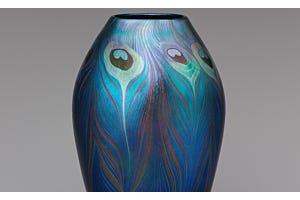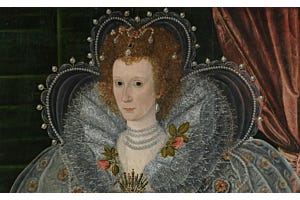
During his long lifetime, the incomparable Michelangelo Buonarroti (Italian, 1475–1564) secured his place among the pantheon of great Western artists. Celebrated for his mastery of drawing, design, sculpture, painting, and architecture, he was so staggeringly skilled even by Renaissance standards that his contemporaries referred to him as Il Divino (“the divine one”).
Among the rare treasures in The Met collection are Michelangelo’s studies (ca. 1510–11) for the ancient prophetess known as the Libyan Sibyl, whom he would paint in large scale (about three times life size) on the northeast end of the Sistine Chapel ceiling. Her complex pose, which communicates the act of closing an enormous book of prophecy and stepping down from her throne, required numerous preparatory drawings, and the sketches housed at the Museum afford extraordinary insight into the artist’s process.


Divine creativity meets divine comfort in our new Michelangelo Libyan Sibyl Unisex Hoodie with a double-layer drawcord hood, front pouch pocket, and an image of the famous red-chalk studies on the drawing’s recto side, which were evidently based on a young male assistant in Michelangelo’s studio.


The central figure is portrayed in profile with his arms bent and upper body twisted so as to exhibit the musculature of his back. This remarkably sculptural anatomy features in the frescoed Libyan Sibyl, whose strapless garment showcases her powerful shoulders and arms. Surrounding the primary study are sketches of toes, which are crucial to an elegant contrapposto pose in which the body responds to bearing its weight on a single leg.
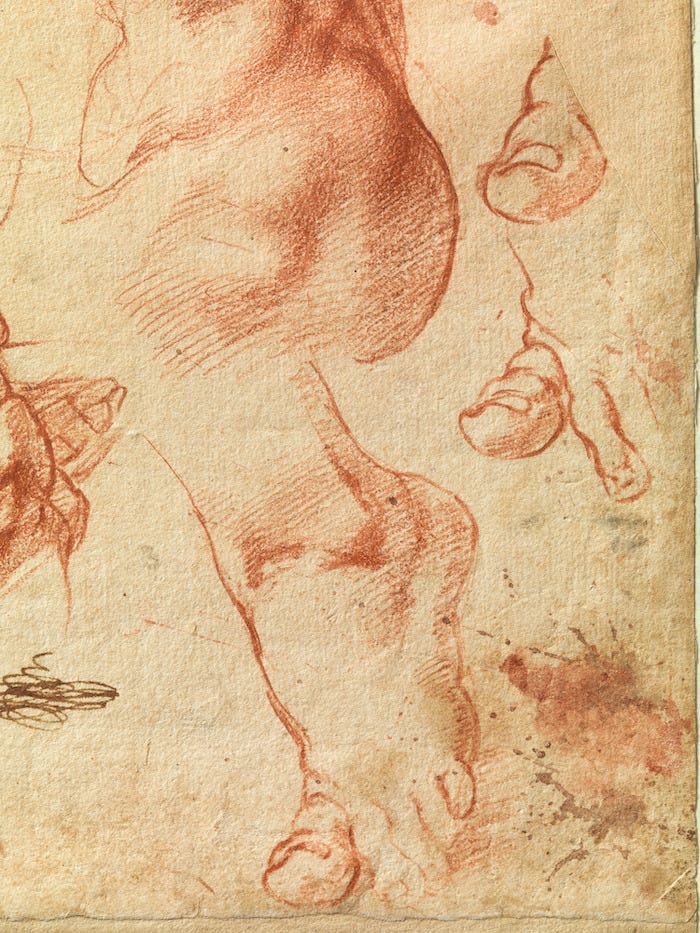

Of the two heads in profile, the facial features characterizing the larger head at lower left appear closer to those of the final Libyan Sibyl.
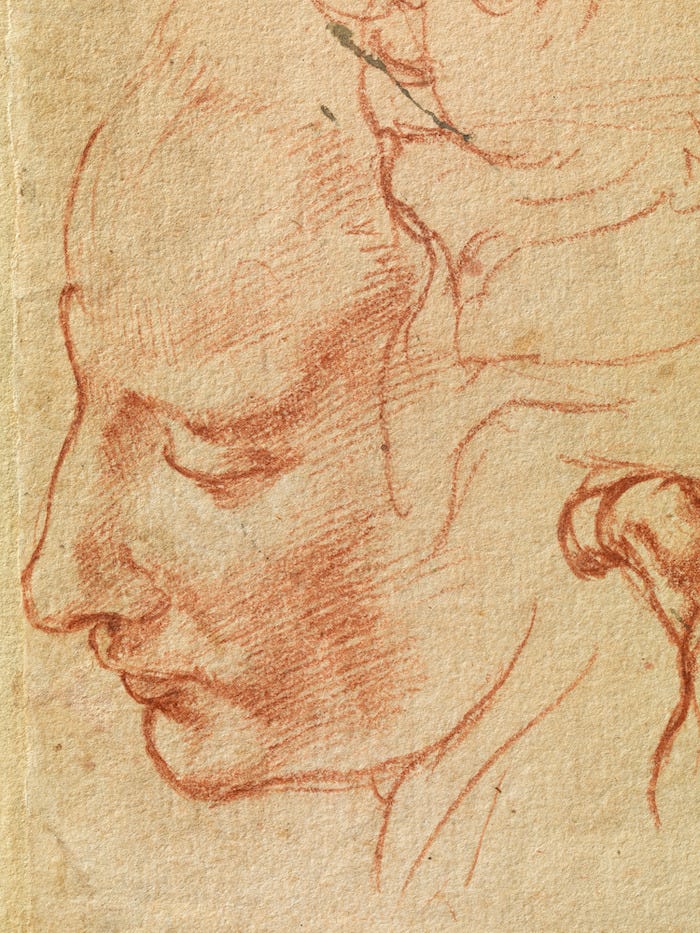

The verso side of the sheet, which bears a small sketch of a more feminine figure, was possibly drawn before the recto side; many of Michelangelo's drawings for the early parts of the Sistine Chapel ceiling were executed in a similar soft black-chalk technique.
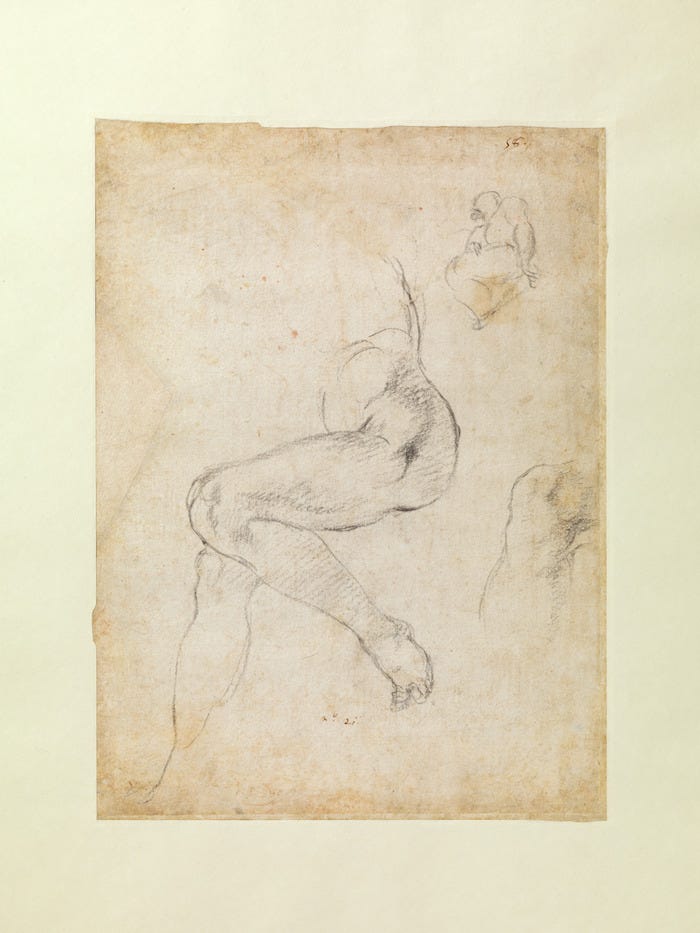

Red chalk, however, was particularly well suited to the illustration of minute anatomical details. Michelangelo began to use red chalk in the early 1490s, but his greatest accomplishments in the medium are linked to the later parts of the Sistine Ceiling, which he executed in two phases: the first spanning from late summer 1508 to late summer 1510, and the second probably started sometime after January 1511 and ending in October 1512 with the Chapel's unveiling. The Libyan Sibyl belongs to the latter phase of the project, when Michelangelo’s virtuosity as a fresco painter was at its apex. The attribution of Michelangelo's red chalk studies for the Sistine Chapel have been among the most contested, though the soft black-chalk sketches on the drawing’s verso side have always been rightly recognized as his work.
These astounding studies were acquired by the Museum in 1924, thanks in part to negotiations by the painter and draftsman John Singer Sargent (American, 1856–1925). Today, this sheet is considered the most magnificent drawing by Michelangelo in North America. Wear it proudly with our cozy hooded sweatshirt, or tote it around with our 100% cotton canvas bag.
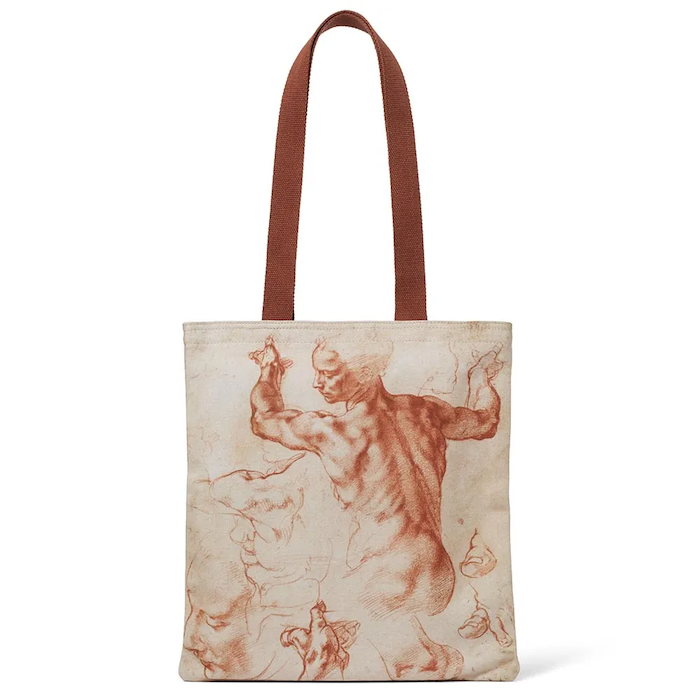

Shop the Michelangelo Libyan Sibyl Unisex Hoodie and Tote in-store and online.






